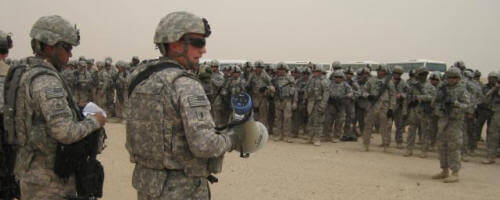Sergeant’s Time Training Tutorials

The purpose of STT is to provide Soldiers with QUALITY training, which at times, is overlooked in favor of convenience. To clarify, quality STT is not found in classrooms or PowerPoint presentations; nor is it found in a brief run of “hip pocket” training. While visual aids and straight-from-the-manual resources can be useful as training supplements, they represent only a small fraction of what STT should encompass.
- Sergeants Time Training Schedule – This is our tutorial about Sergeants Time Training Schedules.
- Sergeants Time Training Sign in Roster – Sample of a Sergeants Time Training Roster
- Sergeants Time Training Sign in Sheet – Sample of a Sergeants Time Training Sheet
- What is Sergeants Time Training? – Our tutorial about what Sergeants Time Training is all about
- What is the Purpose of Sergeants Time Training? – Our tutorial about the purpose of Sergeants Time Training
- Sample Sergeants Time Training memorandum – this is a sample Sergeants Time Training memorandum
- Good ideas for Sergeants Time Training – these are a listing of good ideas for Sergeants Time.
- STP 21-1-SCMT – Soldier’s Manual of Common Tasks, Warrior Skills, Level 1, September 2012.
- Army Study Guide – This is a listing of some of our favorite free board Study Guides.
- Improve your Training skills – How to be a better Army Presenter, this page is full of tips and ideas on how to improve your delivery skills.
- Soldier’s Creed
Here are our favorite Army classes in our 1-Click Topics.
To competently and effectively refine combat skills, Soldiers require much more comprehensive training. Without frequent hands-on training, many of the basic combat-related skills we use as Soldiers quickly diminish. We expect Soldiers to train as they fight, but leaders must also remember Soldiers fight on battlefields, not in classrooms and motor pools. With the largest training area in the entire Army, leaders at this installation should have no issues locating space outside company areas to train.
The transition away from unit footprints also allows STT to become a 360-degree operation. Leaders in this situation are forced to plan training with a combat mindset and determine avenues of approach, methods of travel, and weapon systems to be used. This method of implementation enables STT to become multi-faceted and offers Soldiers an opportunity to engage multiple skillsets while completing the training’s overall objective.


